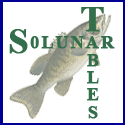Bass on Hook is Supported by our readers.
As an Amazon Associate We earn commissions from qualifying purchases with no extra cost to you.
For more informtion read our Amazon Affiliate Disclosure and Affiliate Disclosure Policies.
Pro Staff Question - How Do I Improve My Plastic Bait Fishing Skills For Bass
Charles "The Bass Doctor" Stuart's Answer

Hi Kasey!
Great e-mail and a favorite one of mine to reply too.
Your first question was concerning plastics.
Improving Your Skills When Fishing Plastic Worms, Lizards and Creatures
That's a very large field of baits, but I am going to assume you are referring to plastic worms, lizards and "creatures" fished in a variety of ways.
For this e-mail response, I am going to discuss the three styles most commonly used.
If you have another style you want to know more about, please drop "Bass On Hook" another e-mail and the pro staff will be happy to respond.
Finesse Rig:
This light line, small hook and subtle presentation, requires a great amount of concentration and effort by the angler, however the rewards can be amazing.
For this application a spinning rod and reel are the best tools for the job.
A 6 to 6'6" medium action rod with a reel capable of handling 8 to 10 pound test line is what you want.
Attach a 1/0 EWG (Extra Wide Gap) hook for 4-inch worms or 2/0 (EWG) for 6 to 8 inch worms.
Occasionally a split shot is used as a weight used when finesse fishing in mid range water depths to get the plastic offering down quicker to the fish you are targeting.
The weight will also take the bait through smaller fish to the larger fish below.
The secret of finesse fishing is accurate casting (as you would for a jig and pig).
This method is where line watching is key to your presentation.
When I give fishing seminars, I show my audiences a trick I use when finesse fishing.
I hold the lure with the hook in my hand and close my eyes.
I "feel" the weight of the entire rig and imagine how it "should" feel on the end of my line.
When I cast out, I have an image in my mind of the total weight.
If that weight gets heavier or lighter, I SET THE HOOK!
Watch for twitches, sudden movements to the left or right or if the line begins to "swim away"!
When any of those things happen, SET THE HOOK!
Texas Rig:
This is another very successful method for catching fish in a variety of situations.
For this application your Bionic Blade fishing rod would work well.
With line no heavier than 17lb test, slide a cone shaped weight onto your line.
This weight should be enough to pull the bait to the bottom and for you to feel the structure as you make your retrieve.
Too little weight and the worm will not give you the contact you need and too much weight will spook the fish and harm your chances of catching anything!
Next, you will attach a hook suitable for the size of worm you intend to use.
Again, 4-inch worm 1/0, 6 inch worm 2/0 and so on.
In weedy situations I like the weight to move freely on the line.
This avoids snagging and trapping the weight in a weed line and disturbing the target area.
In open water situations, use a piece of toothpick to secure the weight in place so that it rests on the head of your lure.
Cast out as far as you can or to your target area.
Your retrieve should be to slowly raise the rod tip dragging the bait along the lake or river bottom.
As you lower the rod, retrieve the slack line with your reel.
All the time, watching and feeling for bites which will come in the form of a tap, tap, tap, on your line.
Make sure you hold your fishing rod with a loose grip so you can feel anything that touches your bait.
Gripping your fishing rod too tightly with diminish any possibility of the sensation from your lure getting to you!
As with Finesse fishing, watch the line for tell tale twitches and movement.
Carolina Rig:
This is a tough method to master, but can catch some really large bass.
A heavier rod with a length of 7 to 7'6" would be best for this application.
I use 20lb test line with an 18 to 24 inch fluorocarbon leader in the 12 to 15lb test range.
Lighter leader material can be used subject to location and structure.
Subject to the wind velocity, I like to use a ½ ounce weight on moderately windy days, up to a 1 and ½ ounce weight when it's blowing a gale!
The secret here is contact with your weight on the bottom of the body of water you are fishing.
All sizes of plastic worms etc, floating crankbaits and many other lures can be Carolina rigged.
Long casts are required to cover as much area as possible when “C-rigging”.
Once you have made your cast, allow the bait to get to the bottom and retrieve any slack line.
Hold the rod horizontally to your side at around the hip level and slowly pull the lure along the bottom, feeling each lump and bump you hit.
Pause often and allow your worm to settle, retrieve slack line as you go and remember the contact you are making is with your weight, not the bait!
While pausing, you should become aware of the worm and feel for anything “unusual” or a strong pull.
Your hook set will also be a little different and needs to be mastered.
When a bite is detected, lower the rod tip towards the water and reel in any slack line.
With one firm stroke, bring the rod around behind you keeping it at the horizontal hip level position previously mentioned.
The reason for this is that you must first pull the weight at speed toward you, so that you can gather any slack in the leader line, allowing you to set the hook.
A regular upward hook set would lift the weight off the bottom but not draw the leader line tight enough to set the hook correctly and would (in most cases), give the fish time to open it's mouth and release the lure.
Phew....OK part two: Back Seat Fishing Tournaments - Should I Jump Right In
Kasey, I think you have the “intestinal fortitude” to fish BASSMASTERS, but I think you will be highly disappointed unless you fish some other tournaments first.
I went the “long route” and I recommend it to everyone.
Yes it's easy to go to the top of the fishing world and fish these tournaments but without prior experience, knowledge of the water you are fishing and “back seat” experience, it will leave a bad taste in your mouth and your bank account a lot lighter!
You have already answered this question yourself because you have a problem with plastics.
Surveys suggest after all these years, that plastics are still the number one tournament winning bait, year in and year out!
You need to practice these methods before you take the next step.
I suggest a local club is your first step.
Learn from the guys who have boats.
Go out with some of them “one on one” when there are no tournaments and watch them.
Learn new techniques, watch them steer the boat with the trolling motor in a variety of situations.
Take notes on conditions, water temperatures and depths.
Note the colors they use and ask questions!
Your notes will become your fishing bible and you will never forget the content.
Good luck Kasey, I wish I was 20 years younger and knew what I know now!
You would be watching me on TV every weekend!!!
Tight Lines!
Charles "The Bass Doctor" Stuart
BassonHook Pro Staff










